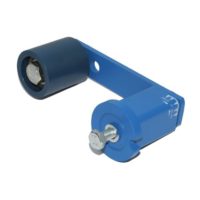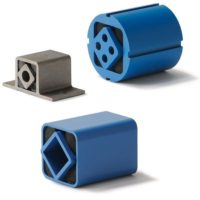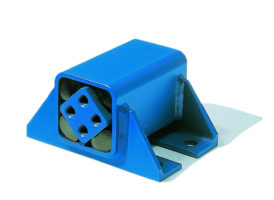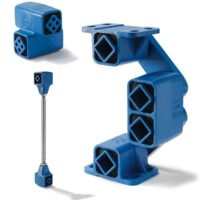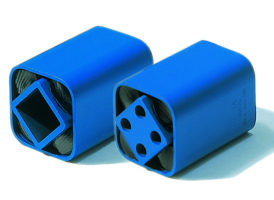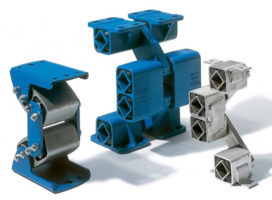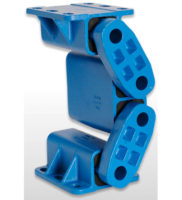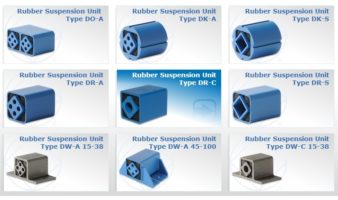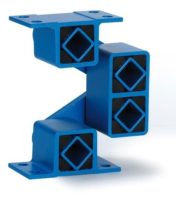
2.7
Linear motion screens
Linear motion screens or linear vibrators are normally excit-
ed by two unbalanced motors or by means of linear exciters,
as well as through double unbalanced shafts (Eliptex), which
generate a linear or slightly elliptical oscillation of the screen-
ing frame. Depending on the inclination positioning of the
exciter, the angle of throw of the screened product can be
adapted to the desired form of processing. A very high ac-
celeration of the screened product, i.e. a higher material
throughput, is achieved with linear vibrating screens. The
screening frame of the linear vibrator is normally in the hori-
zontal position.
Linear vibrating screens are preferably mounted on ROSTA oscillating mountings type AB or AB-HD. Depending on the posi-
tioning of the exciter on the screening frame, the feed-end: discharge-end load distribution can be different. The feed-end side
is normally lighter, as the exciters are positioned close to the discharge-end and thereby pull the material through the screening
frame; in many cases, the feed-end: discharge-end distribution is thereby 40% to 60%. In the interest of an even suspension,
it is thereby recommended to mount the screening frame on six or more ROSTA oscillating mountings. All oscillating mountings
should stand in the same direction, with the “knee” pointing in the discharge-end direction.
Linear motion screens
with counterframe
Discharge chutes hanging
under silos and bunkers
If, due to the demands of
the process, large screens
are mounted at a very high
position in a building or in
a purely steel construction,
the transmission of the re-
sidual forces of a single-
mass machine can set the
entire structure into unwanted vibrations. Or if a new and
more powerful machine is mounted in an existing building,
the residual force transmission could be too high for the
older building. The residual force transmission is drastically
reduced through the mounting of a counterframe under the
screen, with only a negligible loss of oscillation amplitude
(compensation movement of the counterframe reduces the
oscillation amplitude).
ROSTA also has the ideal supports for the suspension of
counterframes, the very compact mountings type AB-D.
Discharge chutes under silos are normally supported by
means of complicated yoke constructions and are suspend-
ed on pressure springs. With its HS suspensions (HS = hang-
ing screen), ROSTA offers the possibility of the direct, cost-
effective suspension of the discharge unit on silos and bun-
kers. The geometry of the HS suspensions has been designed
to accommodate tensile loads.
Oscillating Mountings



